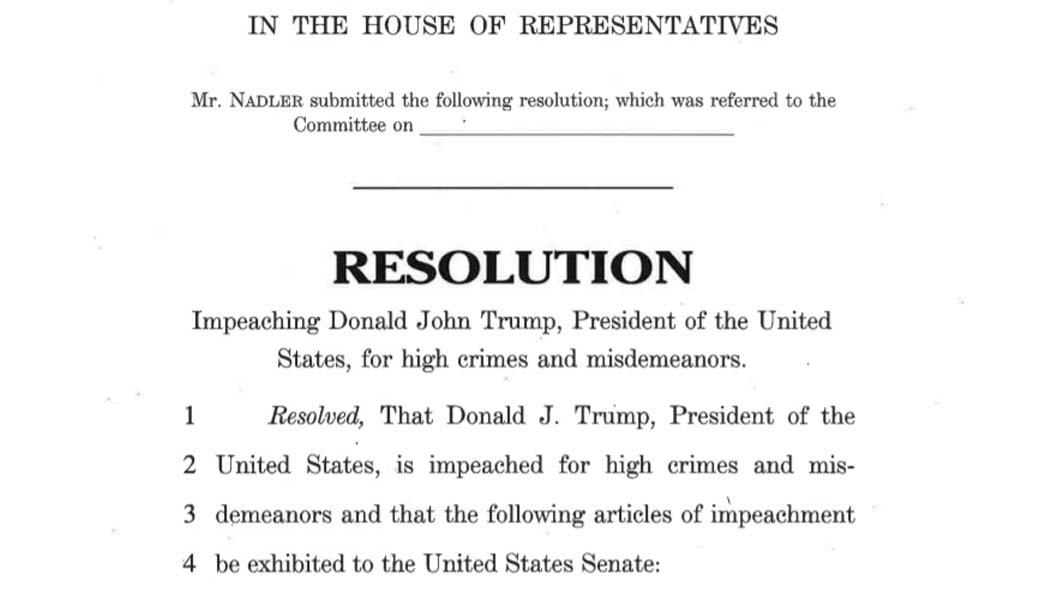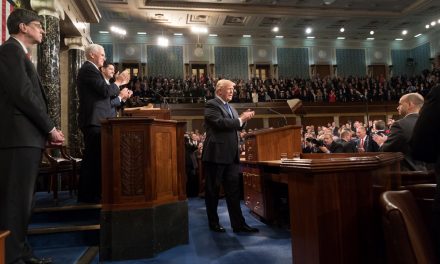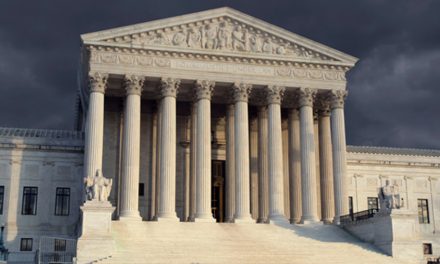The Democrat leaders of the U.S. House of Representatives have produced Articles of Impeachment (Articles) against the president following two committee hearings, one in the House Intelligence Committee and the second in the House Judiciary Committee. In attempting to meet the Constitution’s requirement that a president can be impeached only for “Treason, Bribery, or other high Crimes and Misdemeanors,” the articles zero in on two offenses that Democrats feel meet that standard: 1. Abuse of power; and 2. Obstruction of Congress. Here are the specifics of each charge.
Article 1: Abuse of Power
A good summary of this charge is found on page two of the Articles: “Using the powers of his high office, President Trump solicited the interference of a foreign government, Ukraine, in the 2020 United States Presidential election. He did so through a scheme or course of conduct that included soliciting the Government of Ukraine to publicly announce investigations that would benefit his reelection, harm the election prospects of a political opponent, and influence the 2020 United States Presidential election to his advantage. President Trump also sought to pressure the Government of Ukraine to take these steps by conditioning official United States Government acts of significant value to Ukraine on its public announcement of the investigations. President Trump engaged in this scheme or course of conduct for corrupt purposes in pursuit of personal political benefit. In so doing, President Trump used the powers of the Presidency in a manner that compromised the national security of the United States and undermined the integrity of the United States democratic process. He thus ignored and injured the interests of the Nation.”
Article 2: Obstruction of Congress
This charge is all about subpoenas. On page seven, the Articles list three alleged actions by President Trump as the basis for this charge:
“(1) Directing the White House to defy a lawful subpoena by withholding the production of documents sought therein by the Committees.
(2) Directing other Executive Branch agencies and offices to defy lawful subpoenas and withhold the production of documents and records from the Committees…
(3) Directing current and former Executive Branch officials not to cooperate with the Committees – in response to which nine Administration officials defied subpoenas for testimony…”
The response from the White House to the announcement of the articles of impeachment was swift. On the same day the articles were announced, President Trump tweeted, “To Impeach a President who has proven through results, including producing perhaps the strongest economy in our country’s history, to have one of the most successful presidencies ever, and most importantly, who has done NOTHING wrong, is sheer Political Madness!”
What’s next?
The process is easy to understand. The articles will be voted on this week in the House Judiciary Committee run by Rep. Jerry Nadler (D-NY), and if passed, will be sent to the House floor for a vote of the entire House membership. If a majority of the House votes for impeachment, the President is considered “impeached,” and the process, constitutionally, moves to the Senate for a trial, which Senate Majority Leader Mitch McConnell (R-KY) has promised will happen. A vote of two-thirds of the Senate is necessary for conviction and removal of the President.
What can citizens do? Consider contacting your U.S. Senators and Representative at the Capitol switchboard in Washington, D.C. (202-224-3121) and letting them know how you feel about the impeachment process. And pray for those in the House and Senate entrusted with casting votes in a process that will have a major impact on our nation. (1 Timothy 2:2)






